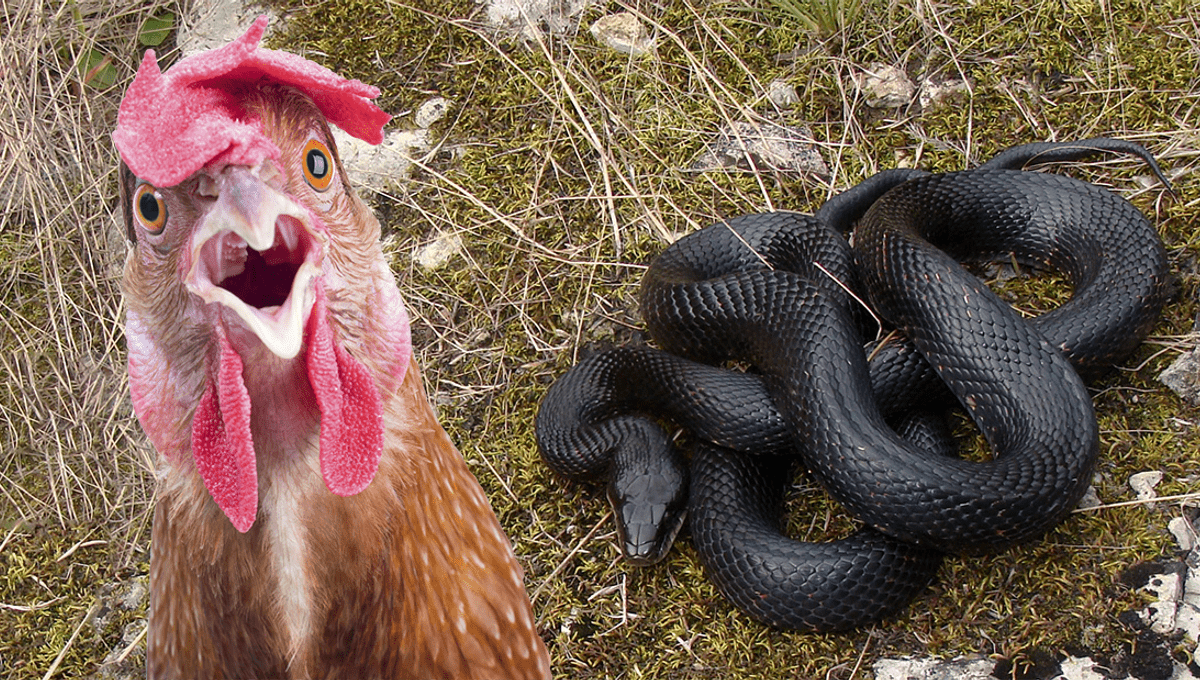
“This man has been bitten,” a doctor cries, wheeling the patient to an emergency room like he thinks he’s Doctor House. “Fetch me the anuses of 75-100 chickens, stat”. That is roughly what you could have heard if you found yourself on the anus end of an old snake bite treatment, documented in The Indian Medical Gazette in 1928.
According to the article, a 36-year-old man had stood on a cobra, which had bitten him on the back of his leg. When he arrived at the doctor’s office, he was showing no symptoms other than numbness around the puncture wounds. This was likely about to change, however, as the doctor had no antivenom at hand. However, Dr Kubab did have a rather inexhaustible supply of chickens with, more importantly, their inexhaustible supply of buttholes.
Dr Kubab was aware of an old folk practice, which he attributes to being from India but may have earlier roots in 13th century Europe, of getting a live chicken and applying its anus to the wound.
“I applied an indigenous treatment which is much in vogue in the Ratnagiri district. The fang marks were well incised and chickens, one after the other, with their anuses well stretched were applied to the site of the bite.”
“The first few chickens dropped down dead within a few minutes.”
Kubab kept going with the treatment as the poultry casualty count went through the roof. On chicken number 42, the patient apparently reported that he could feel the suction from the chicken’s anus, which was probably a reassuring thing to hear when you have just caused the death of 41 other chickens to little effect.
Kubab claimed that over the three-and-a-quarter-hour treatment,74 chickens out of 96 met their end by having their buttholes pressed up against a venom-filled wound. Twelve more were thought to be “half-dead” but went on to recover, and another six lost consciousness but rallied from their strange experience too.
“Most of the chickens died within three minutes,” Kubab noted. “The strongest suckers were hens in their prime. Hens which had laid eggs were quite useless, and young cocks unsatisfactory.”
Snake bites, according to the Kubab, were generally treated like this in the Ratnagiri district in India. The advice is similar to some found in medieval surgeon Henri de Mondeville’s unfinished text “La Chirurgie”.
“Get someone to suck the bite; the sucker should rinse his mouth with oil or oil and warm wine and rub oil of violets on his lips, and have a full stomach of garlic and nuts,” the advice reads, before curveballing hard.
“If no volunteer can be found to suck the wound, pluck feathers from the anus of a rooster or a chicken and place it on the bite until it dies. Then apply more.”
Other texts from the same time period advised that pigeons should be favored for the procedure, but if they are not available young chickens, roosters or weasels can be used instead. Whatever you have handy.
However, it’s likely that the birds died for naught. “It is difficult to see how so viscid of a substance can be extracted when it is probably buried in the tissues at two spots, about a third of an inch or so away from the sites of the punctures,” the editor of the Indian Medical Gazette replied to Kubab. “It is a little difficult to state what these chickens died from.”
It’s also worth noting that sucking out snake venom is also a terrible idea.
“Although these outdated measures are still widely accepted by the general public,” Robert A. Barish, a doctor at the University of Maryland School of Medicine said in a 2002 press release on the topic, WebMD reports, “they may do more harm than good by delaying prompt medical care, contaminating the wound or by damaging nerves and blood vessels”.
Source Link: An Old Method Of Extracting Snake Venom With Chicken Anuses Led To 74 Dead Chickens